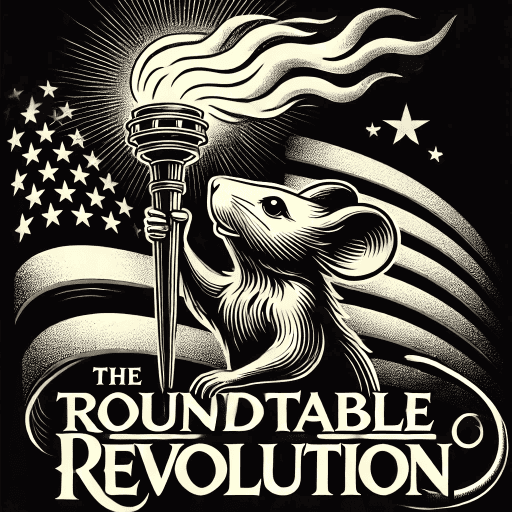
The Roundtable Revolution is built on the belief that real solutions come from the collective wisdom of the people. While these policies provide a strong foundation, they aren’t complete—they’re a starting point. Every idea has gaps, unanswered questions, and challenges that need to be addressed. That’s where you come in.
This section highlights the areas in each policy that require your input, expertise, and creativity. By working together, we can refine these ideas, fill in the blanks, and create solutions that work for everyone. Your voice matters, and this is your chance to help shape the future.
Equity Equation Project (EEP)
- Formula Development:
- The lack of a concrete formula to calculate equitable pay ratios is a major gap. How can we define a scalable, adaptable algorithm that reflects industry norms, company size, and cost-of-living variations?
- Enforcement Mechanisms:
- What systems will ensure compliance without overburdening small businesses or creating loopholes for larger corporations?
- Worker Classification:
- How do we account for gig workers, remote workers, and independent contractors while maintaining equity?
- Economic Metrics:
- What benchmarks will measure the impact of pay caps on employee wages, consumer prices, and broader economic health?
Future Tuition Fund (FTF)
- Institutional Compliance:
- How will colleges and universities be required or incentivized to participate in direct repayment models?
- Default Management:
- How will institutions manage students who cannot repay loans, and what safety nets need to be established?
- Administrative Cost Absorption:
- How will schools, particularly smaller ones, absorb administrative costs without raising tuition?
- Legal Framework:
- What laws or regulations need to change to allow direct repayment models between students and schools?
Fair Representation Act (FRA)
- Independent Commission Structure:
- How will members of redistricting commissions be selected to ensure true nonpartisanship?
- Census Data Use:
- How will the policy adapt if census data becomes outdated or inconsistent, especially in interim years?
- Technology Barriers:
- How will states with limited resources access advanced mapping tools for fair redistricting?
- Oversight Authority:
- What agency will ensure that redistricting processes are transparent and meet federal standards?
Civic Knowledge Act (CKA)
- Test Standardization:
- How will the civics test be designed to avoid cultural, educational, or linguistic bias?
- Access Barriers:
- How will rural or underserved communities access the resources needed to prepare for and take the test?
- RCV Integration:
- How will RCV education be integrated into schools and voter outreach programs in a way that’s easy to understand?
- State Autonomy:
- How will this federal policy coexist with states’ rights to set their own voter education and registration rules?
Vote America Act (VAA)
- Donation Cap Levels:
- What criteria will determine the maximum allowable donation for individuals?
- Monitoring System:
- What technology or agency will monitor donations and expenditures to ensure transparency and prevent dark money loopholes?
- PAC Regulation:
- How will we enforce stricter rules on PACs while respecting free speech concerns?
- Candidate Equalization:
- How will the act ensure that capped campaign funds do not disadvantage candidates from underserved or rural areas?
Immigration Reform
- Streamlined Application Processes:
- What changes will reduce bottlenecks in immigration processing without sacrificing security or fairness?
- Population Growth Safeguards:
- How will we define acceptable population growth limits and monitor for regional strain on infrastructure and services?
- Sector-Specific Labor Needs:
- How will the policy dynamically respond to labor shortages in industries like agriculture and hospitality?
- Vetting Procedures:
- How will we design vetting processes that balance speed, security, and fairness for applicants?
Second Amendment Freedom and Safety Act (SAFSA)
- Grandfather Clauses:
- What standards will determine which firearms or owners qualify under grandfathering provisions?
- Cross-State Gun Flow:
- How will federal standards address the movement of firearms from lax-regulation states to stricter ones?
- Ownership Accountability:
- What measures will ensure accountability for gun owners (e.g., storage, training) without creating an undue burden?
- Federal vs. State Regulation:
- How will we resolve conflicts between federal standards and states’ autonomy over gun laws?
General Gaps Across All Policies
- Federal-State Coordination:
- How will these policies navigate the overlap and conflicts between federal mandates and state sovereignty?
- Public Trust and Transparency:
- How will the movement ensure that the public trusts the data, systems, and oversight mechanisms used to implement these policies?
- Economic Impact Assessment:
- What studies or projections are needed to understand the financial impact of these policies on institutions, businesses, and individuals?
- Scalability:
- How will these policies adapt to diverse regions with different economic, cultural, and demographic realities?
- Evaluation Metrics:
- What benchmarks will define the success or failure of each policy?
Share! Pass it along! That’s how this works! Let it begin!


